- What Does Trout Taste Like: Unraveling the Flavor Mysteries - August 2, 2023
- Best Fishing Bibs Tested & Reviewed: Buyer’s Guide - July 19, 2023
- Fishing for Whiskers: Best Bait for Catfish - July 12, 2023
Trout species have been captivating the hearts of anglers for centuries. From brown trout to rainbow trout, lake trout and sea trout, these fish are a favorite among recreational fishermen. For those looking to improve their angling prowess, understanding the various species of trout is key. In this article we’ll explore the various species of trouts available around the world – from brook trouts to cutthroat trouts and steelhead trouts – as well as their habitats and differences between wild versus stocked varieties. So grab your rod and let’s dive into all things related to trout.
Table of Contents:
- Types of Trout
- FAQs
- Conclusion
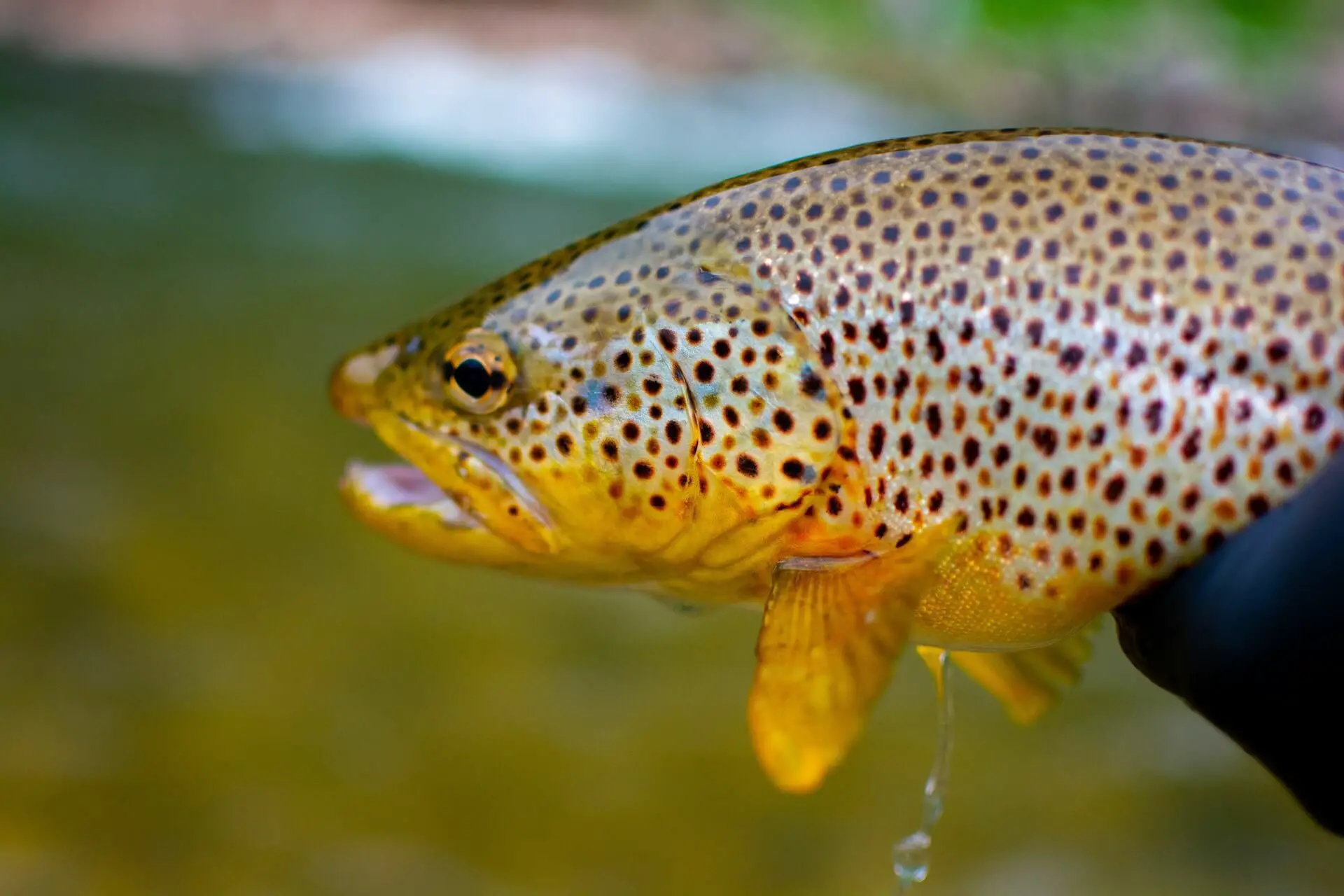

Brown Trout
Brown trout, a species of fish found in freshwater rivers and streams around the world, are popular among anglers for their size and strength. Brown trout boast an olive-brown hue, with dark spots dotting their sides. The average brown trout ranges from 8 to 24 inches long but can grow up to 36 inches or more in some cases.
Brown trout favor cold water temperatures between 10°C and 18°C, inhabiting fast-flowing streams with plenty of shelter from predators such as rocks, logs or undercut banks. They typically live in fast-moving streams with plenty of cover such as rocks, logs, or undercut banks for protection from predators. In addition to these habitats, brown trout also inhabit lakes during certain times of the year when they migrate upstream for spawning season. Brown Trout can be found throughout North America, Europe, and Asia in both wild populations as well as stocked fisheries managed by state agencies or private entities like fishing clubs or lodges.
Characteristics
The most distinguishing feature of brown trout is its darkly mottled body which helps it blend into its environment while hunting for food like aquatic insects or small baitfish such as minnows. Its diet consists mainly of smaller prey items but larger specimens will also feed on crayfish or frogs if available near them. Its remarkable capacity for adaptation to various environmental conditions has made it a favorite among anglers worldwide.
Experimentation is key for anglers looking to catch brown trout, as each technique has its own advantages. Whether it’s spinning gear with spoons and spinners, fly-fishing with wet flies, trolling with plugs, bottom bouncing rigs tipped with nightcrawlers or worms, jigging soft plastics off structure near deep holes or drift fishing eggs downstream over riffles/runs – the savvy fisherman will need to try a few methods before they hit on the best approach in any given situation.
Anglers often seek out the sizeable, plentiful Brown Trout for a satisfying fishing experience. Rainbow Trout provide an exciting challenge with different characteristics than Brown Trout, making them attractive to experienced fishermen.
Key Takeaway: Brown trout, prized for their size and tenacity, are widely distributed in North America, Europe, and Asia’s freshwater rivers and streams. They can be caught using various techniques such as spinning gear with spoons or trolling with plugs; however anglers must experiment to find the best approach for any given situation.
Rainbow Trout


Rainbow Trout are one of the most popular fish species among anglers, recreational fishermen and bass fisherman alike. Rainbow Trout inhabit cold-water bodies of water from streams to lakes, rivers and reservoirs in North America, as well as along the Pacific Coast from Alaska to Mexico. Rainbow trout can be encountered in various aquatic environments along the Pacific coast, stretching from Alaska to Mexico. Rainbow trout have a distinctive color pattern which consists of a pinkish stripe down their sides with black spots scattered throughout their bodies.
Trolling and fly fishing are two common methods of angling for rainbow trout, depending on the type of water they inhabit. In slow moving waters like lakes or reservoirs, trolling with lures such as spinners or spoons is an effective way to catch them. For fast moving streams and rivers, fly fishing with nymphs or dry flies is often more successful due to its subtle presentation in these environments.
Wild rainbow trout tend to offer more of a challenge when hooked due to their adaptation over time and access to natural food sources such as insects or baitfish, whereas stocked rainbows may not be quite as feisty since they’ve grown accustomed to human contact during stocking events. In other words, wild ones typically put up a better fight than their hatchery-bred counterparts.
Rainbow trout are a popular species of fish among anglers and recreational fishermen alike, due to their abundance in many freshwater systems. Lake trout, a species with its own unique traits, can be located in various northern regions.
Key Takeaway: Anglers often seek out rainbow trout, particularly in the chilly waters of streams and rivers across North America. Trolling with lures or fly fishing with nymphs or dry flies is the most effective way to catch them, but wild rainbow trout tend to put up more of a fight than their hatchery-bred counterparts.
Lake Trout
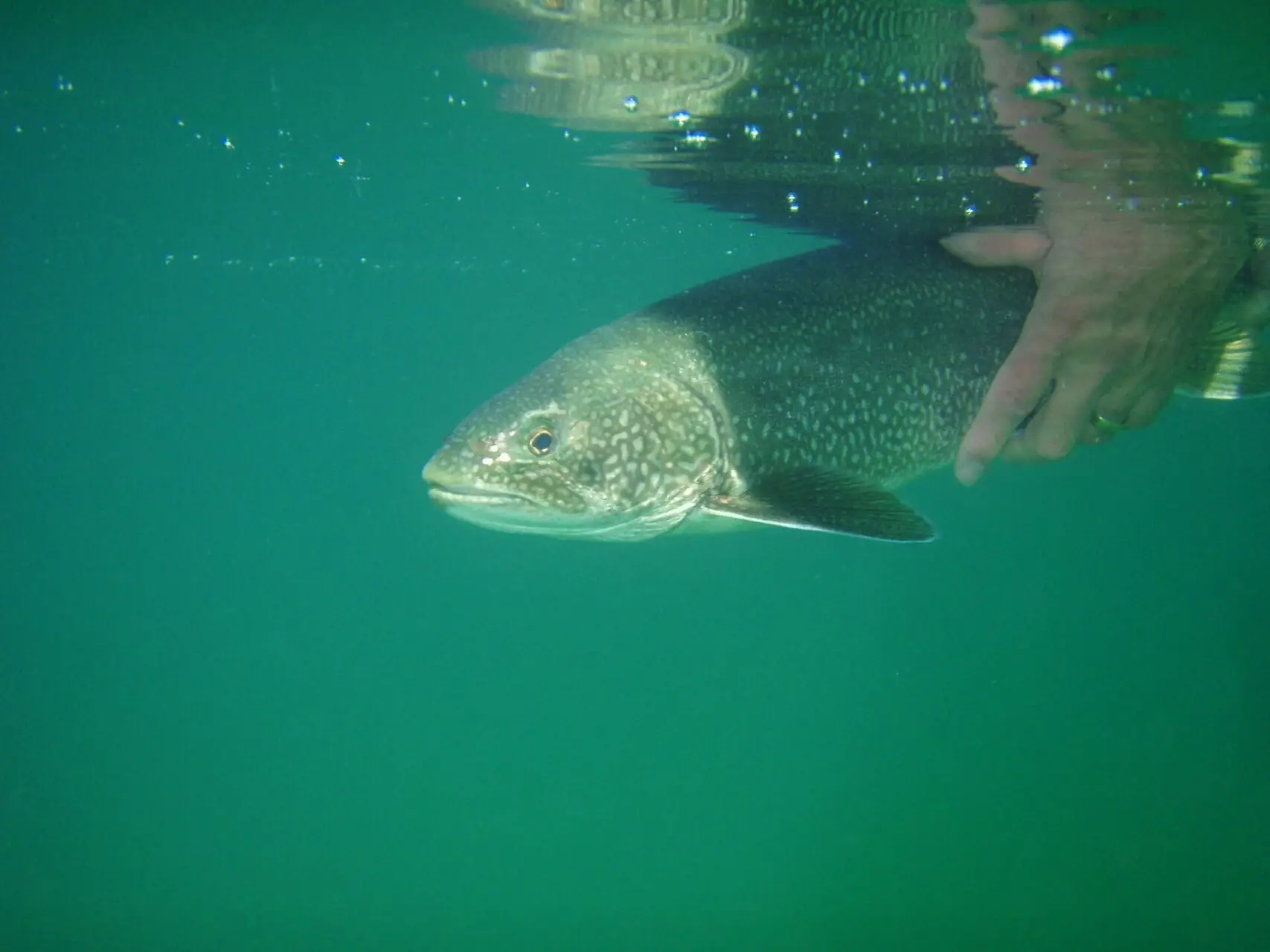

The mackinaw or lake char, commonly known as lake trout, are native species of trout in North America and thrive in cold-water lakes and rivers of the northern US and Canada. Lake trout can be found in the cold-water bodies of water throughout northern America and Canada. Lake trout can reach an impressive size, with some specimens growing up to four feet in length and weighing over 50 pounds.
Habitat and Distribution
Lake trout live in deep, cold water habitats such as large lakes with rocky bottoms that have plenty of vegetation for them to hide among. In the United States, they are primarily located in the Great Lakes area but also have a presence throughout Alaska, Montana, Wyoming, Minnesota, Wisconsin and Michigan. In Canada, they are particularly abundant in British Columbia but also present throughout Alberta, Saskatchewan and Manitoba.
The lake trout, a member of the salmon family, is an exceptional game fish due to its size and fight when reeled in. Its mottled dark olive green skin with lighter spots along its back fading into white towards the belly provides camouflage while it skulks through murky waters or hides amongst rocks at the bottom of lakes or rivers where they prey upon smaller baitfish like smelt and herring during daylight hours before retreating to deeper depths at nightfall.
Trolling is the way to go when it comes to lake trout fishing since they prefer colder temperatures than other species. Heavier line weight may be necessary if you’re near surface level, and lures such as spoons tipped with worms instead of live bait like minnows are preferred for targeting larger specimens down deep. This method allows you to cover more ground quickly without having to reset baited lines every few minutes, unlike traditional still fishing methods.
Fishers can find success in numerous places with the correct strategies when attempting to capture Lake Trout. Sea Trout provide an even more exciting challenge to fishermen as their habitat is much wider spread than that of Lake Trout.
Key Takeaway: Lake trout, a widely-sought sport fish found in cold water bodies of North America, can reach up to four feet and weigh over 50 pounds. Trolling is the preferred method for targeting lake trout since it allows you to cover more ground quickly without having to constantly reset baited lines like with still fishing.
Sea Trout
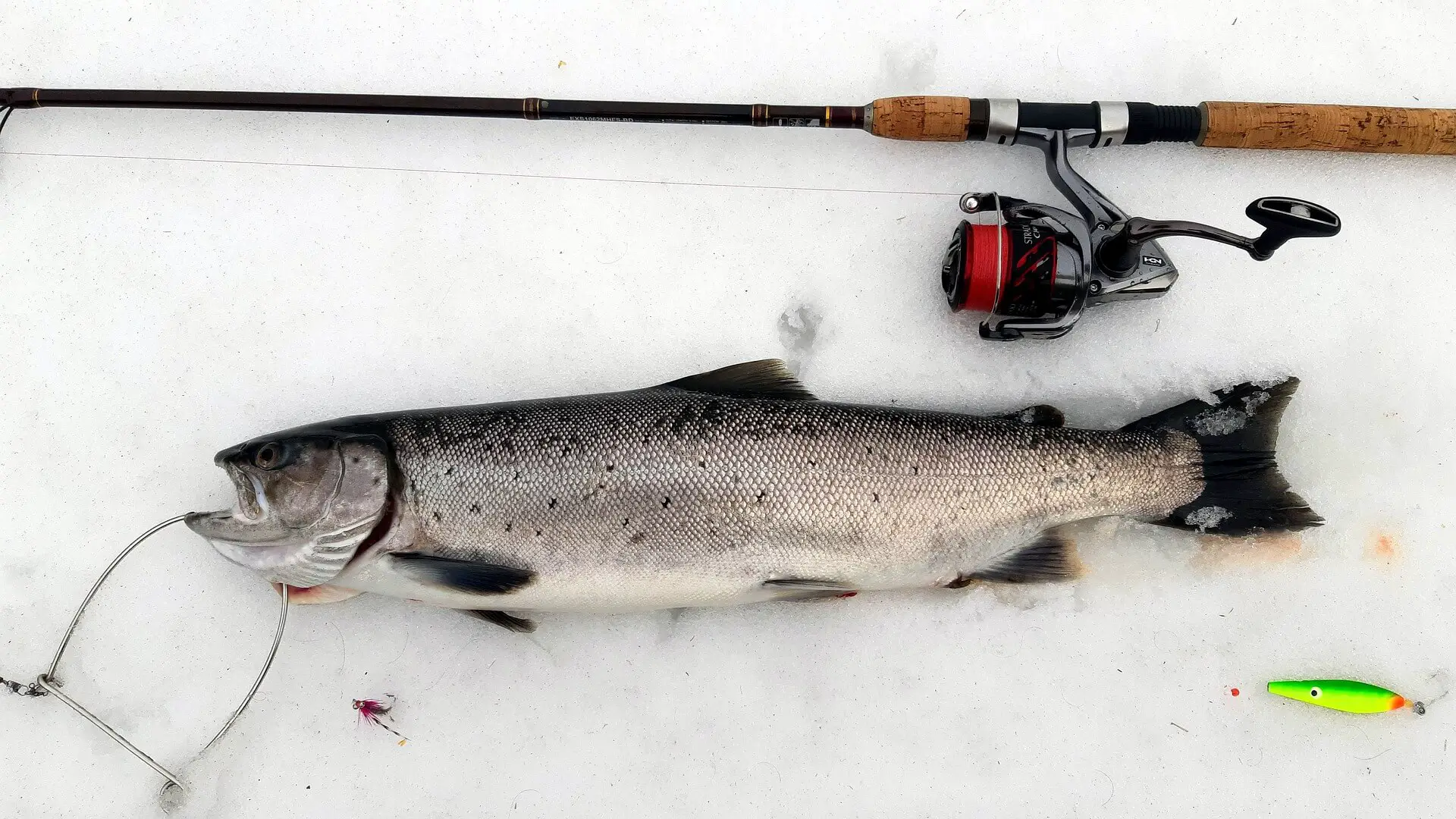

Sea Trout, or Salmo trutta, are a species of salmonid fish that is native to the northern Atlantic Ocean and are also referred to as sea-run brown trout. They can be found in both freshwater and saltwater habitats from Greenland to Portugal. Sea trout feature a shimmering silver hue, with darker blotches adorning their backs and sides. Sea trout typically range from 2-4 pounds, though they may reach up to 10 or more in certain environments.
Habitat and Distribution
Sea trout prefer cool water temperatures between 55-65°F and tend to inhabit coastal estuaries, rivers, streams, lakes, ponds, bays and other shallow bodies of water near the shoreline. They migrate out into the open ocean during spawning season when they return to their natal river systems to lay eggs. In some areas like Norway’s Trondheimsfjorden system there have been reports of sea trout reaching weights up to 20 lbs.
Characteristics
Sea trout have an elongated body shape with small scales covering its entire body except for its head which has larger scales than most other fish species in this family such as brown trout or rainbow trout. Its fins are also quite distinctive; it has an adipose fin located between its dorsal fin and caudal fin (tail). It also has two pectoral fins located behind its gill covers which help it maneuver through tight spaces underwater while searching for food sources like crustaceans or insects larvae that may be living nearby in rocky crevices along the shoreline.
Fishing Techniques
Lures such as spinners or jigs work well for catching sea trout but bait fishing is often preferred because it allows you target specific feeding patterns more accurately than using lures alone would allow you too – so don’t forget your bait box. For those looking specifically targeting bigger specimens trolling deep diving crankbaits will usually produce results quickly if conditions are right – just remember patience pays off when hunting down trophy sized catches.
Recreational fishers often seek out Sea Trout, which are commonly found in a variety of aquatic environments worldwide. Brook Trout, another popular trout species, have their own unique characteristics and fishing techniques that make them a great target for fishermen of all levels.
Key Takeaway: Sea trout are a species of salmonid fish found in freshwater and saltwater habitats from Greenland to Portugal. They prefer cold water and hunt everything from small baitfish to crustaceans.
Brook Trout: A popular species of Trout in North America
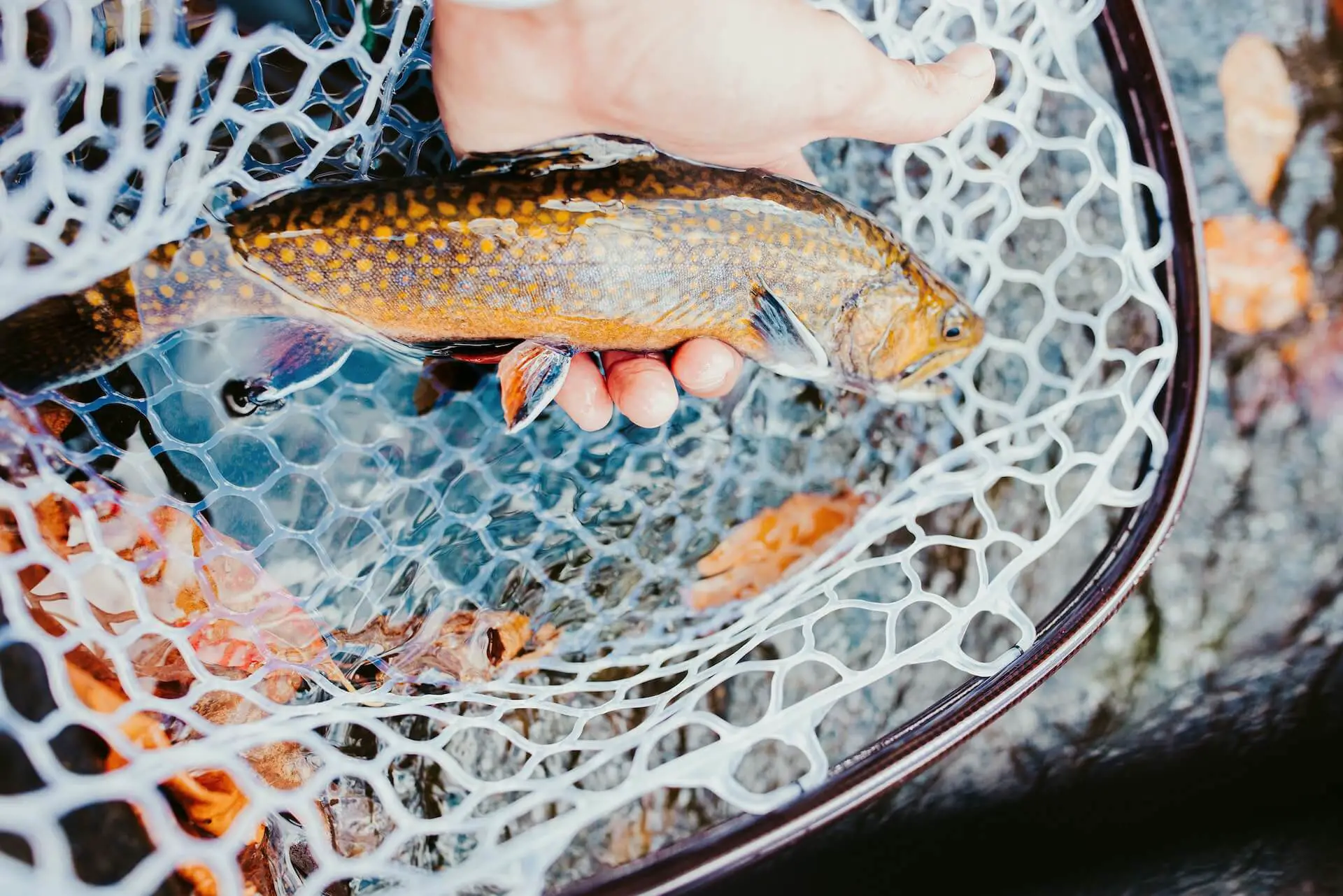

Brook trout are a popular species among anglers and fishermen, due to their vibrant colors and willingness to bite. They can be found in many freshwater rivers, streams, ponds, and lakes across North America. In addition to their natural range, brook trout have been introduced into other parts of North America.
Habitat & Distribution
Brook trout prefer cold water with plenty of oxygenated water sources like fast-moving streams or deep pools. Brook trout thrive in temperatures of 12–20 °C (54°F – 68°F). The best time for brook trout fishing is during spring when they’re spawning in shallow waters near shorelines or weed beds. In terms of distribution, they can be found from Newfoundland down through Georgia in the United States and all throughout Canada.
Characteristics
Brook trout have an olive green back with light spots on it that look almost yellowish at times; their sides also have small red dots along them too. Adult fish tend to grow up around 10-14 inches long while some exceptional specimens may reach 20 inches.
When targeting brook trout, anglers can use a range of techniques depending on the bait and location, such as fly fishing or spinning lures that imitate small prey, or natural baits like nightcrawlers. Fly fishing or spinning lures such as spoons or spinners that imitate small prey like minnows or worms are effective methods for catching these feisty fish. Alternatively, one could opt to use natural baits such as nightcrawlers which often produce larger catches due to wild brookies’ predilection for live food.
Key Takeaway: Brook trout are an iconic species among anglers and fishermen, known for their vibrant colors and willingness to bite. Brookies can be encountered in numerous aquatic environs from Newfoundland to Georgia, including rivers, creeks, pools and lakes. Anglers may employ a variety of techniques when targeting brookies such as fly fishing or spinning lures with natural baits like nightcrawlers – depending on the size fish they’re after.
Cutthroat Trout
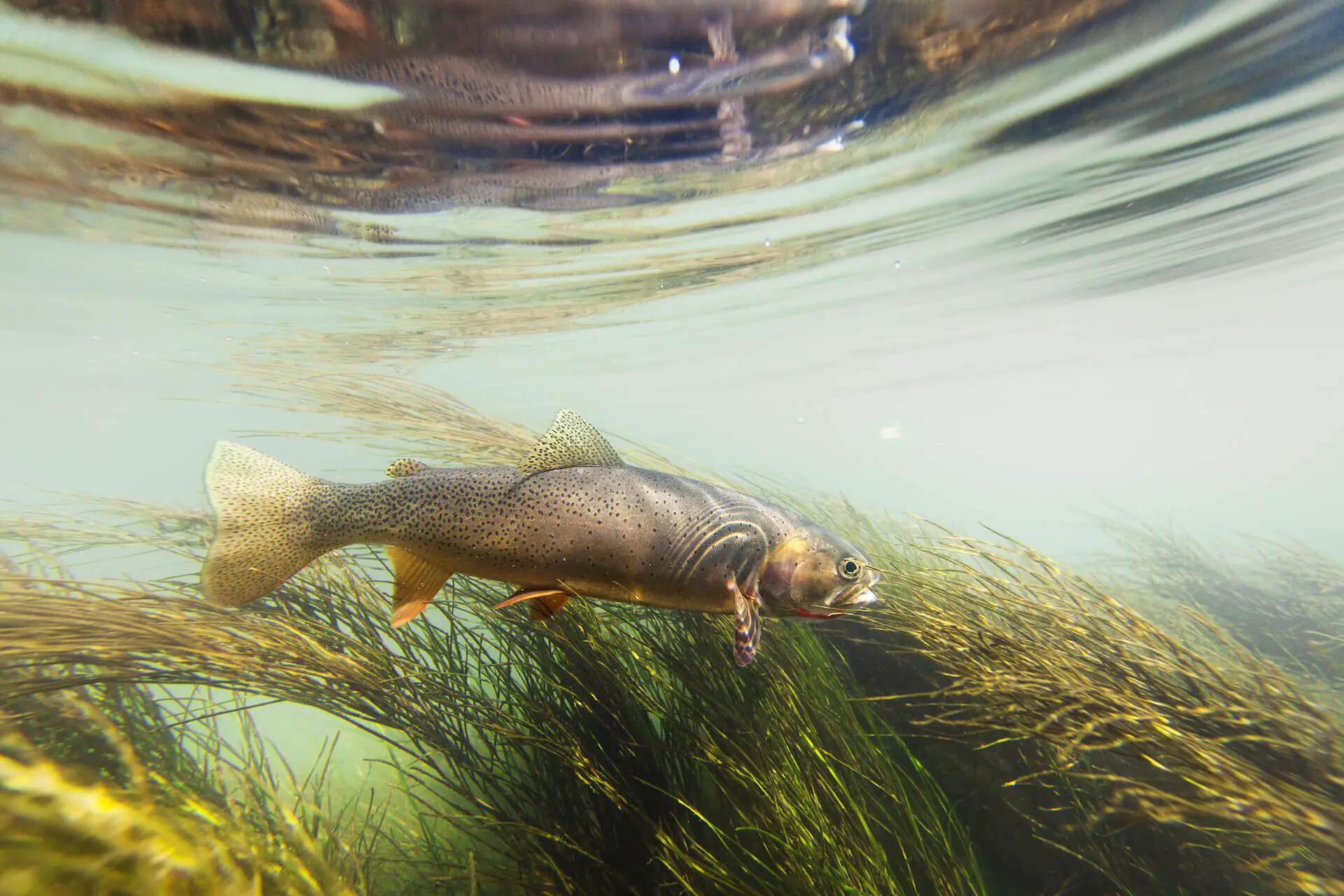

Cutthroat trout are a species native to the western United States and Canada. They get their name from the distinctive red slash marks found on either side of their throat, which is where they derive their name. Cutthroat trout can be distinguished from other species of trout by these markings, as well as by their size and darker coloration.
Cutthroat trout inhabit rivers, streams, lakes and ponds in cold water environments with plenty of cover for them to hide in. They feed primarily on aquatic insects but will also take small fish if given the opportunity. Cutthroats are an aggressive species that will readily strike lures or bait presented to them in a variety of ways including trolling, casting or fly fishing techniques.
One thing that sets cutthroats apart from other species is that they tend to spawn earlier than most other types of trout due to their preference for warmer waters; typically between April and June depending on location and weather conditions.
This makes them one of the first fish available for anglers when spring arrives each year!
When it comes to catching cutthroat trout there are several tactics you can use depending on your preferred method such as spinners, spoons or flies fished near structure like logs or rocks along shorelines during low light periods such as early morning or late evening hours when visibility is reduced making it easier for predators like cutties to ambush prey items without being seen themselves!
Dolly Varden
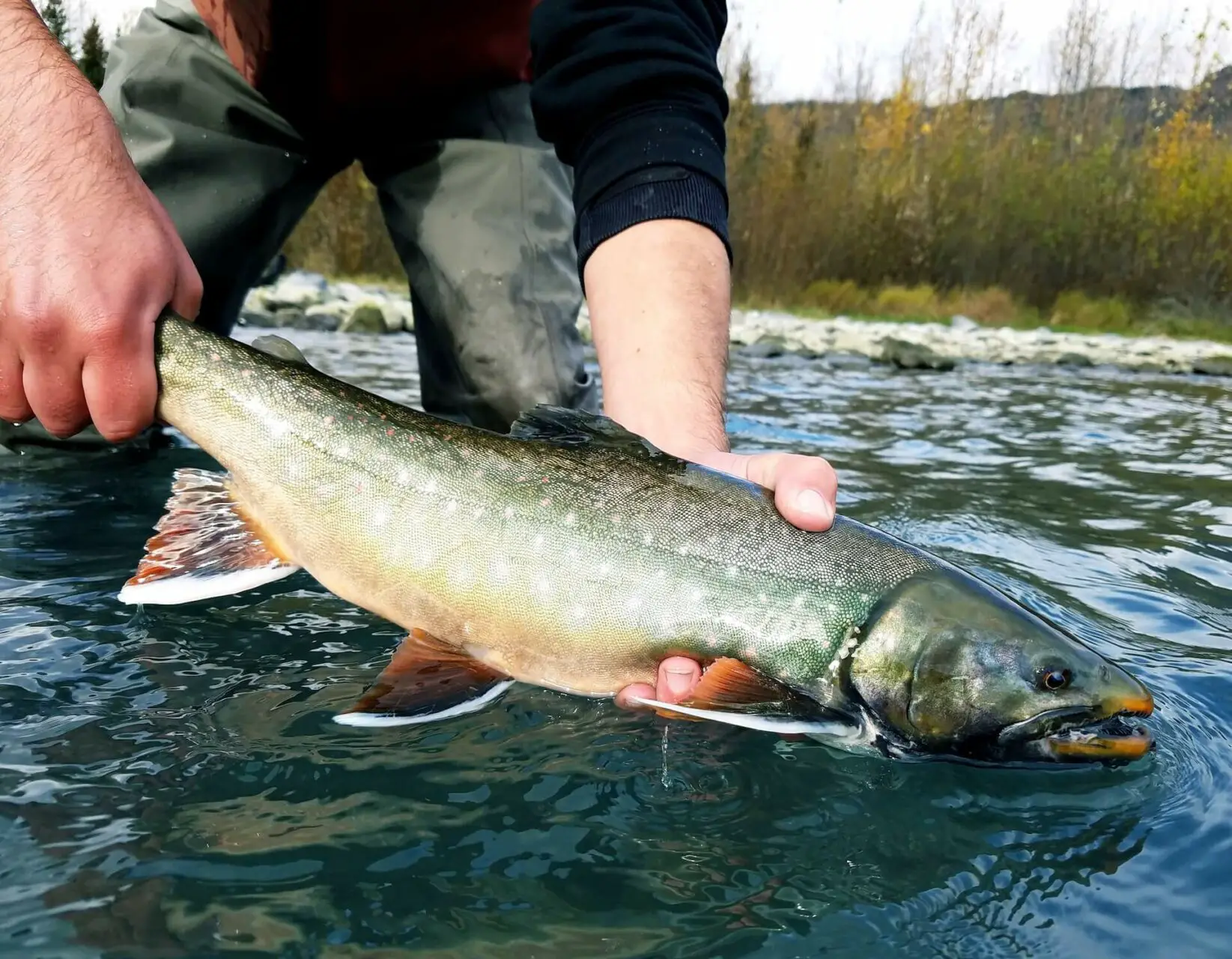

Dolly Varden Trout, also known as the Arctic Char, is a species of trout that is native to the northern regions of North America and Europe. It has a unique appearance compared to other trout species due to its bright red spots on its sides and fins.
Dolly Varden are usually found in coldwater streams or lakes with temperatures between 40-50°F (4-10°C). They can also be found in deep water areas where they feed on smaller fish such as minnows, sculpins, and crayfish. Unlike Brown Trout which prefer rivers and streams for spawning, Dolly Vardens spawn in shallow waters near shorelines. The female will lay her eggs at the bottom of these shallow areas while the male guards them until they hatch.
After hatching, young Dollies will remain close to their parents for protection from predators until they reach adulthood when they move into deeper waters.
When it comes to fishing for Dolly Vardens there are several techniques anglers use including trolling lures or bait along rocky shorelines; casting spinners or spoons around structure; drifting worms under a bobber; jigging small grubs tipped with maggots; fly fishing with streamers or nymphs; and using live bait like minnows or crayfish.
All these methods work well but one should remember that this species is not very aggressive so patience is key when trying to catch them!
Dollies have become popular among recreational fishermen due to their hard fighting nature once hooked up – often described as “the fight of your life” – making them an exciting target species for many anglers looking for something different than just catching Bass or Walleye all day long!
Marble Trout
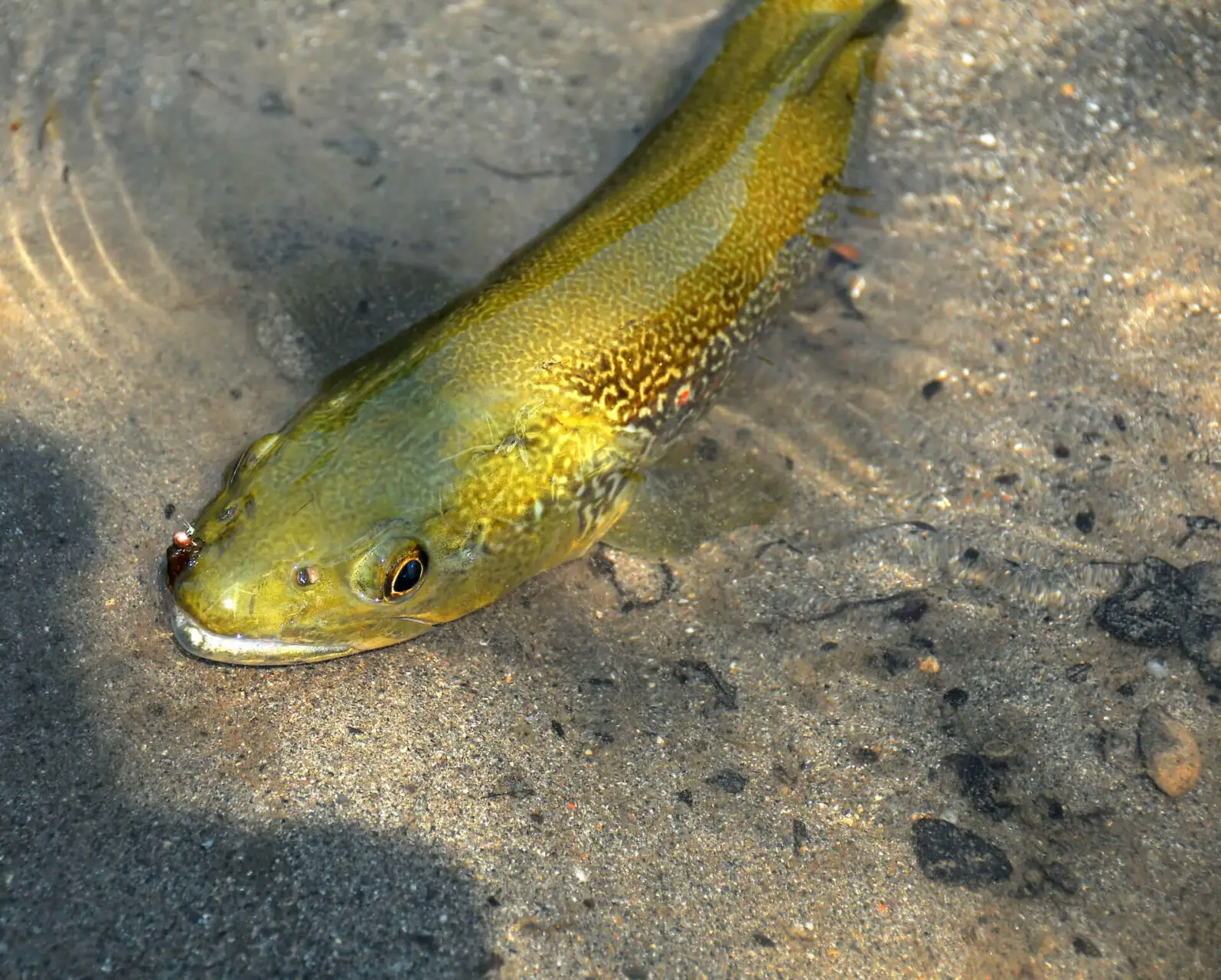

Marble Trout are a unique species of trout that have become increasingly popular among anglers. They can be found in rivers and streams throughout Europe, particularly in Italy, Slovenia, Croatia and Bosnia-Herzegovina. Marble Trout differ from other types of trout in several ways. For starters, they tend to be larger than most other species; some specimens have been known to reach up to 40 inches long!
In terms of coloration, Marble Trout are quite distinct from their counterparts. Their bodies feature an intricate patterning of black spots on a silver or white background – hence the name “marble” trout – while their fins may also display similar markings or even shades of pink or yellow. This makes them highly sought after by fishermen who want something more exotic than your typical brown or rainbow trout.
Finally, it should be noted that wild populations of Marble Trout are threatened due to overfishing and habitat destruction so if you do decide to go out fishing for these beauties then please practice catch-and-release whenever possible so we can ensure this species survives well into the future!
Steelhead
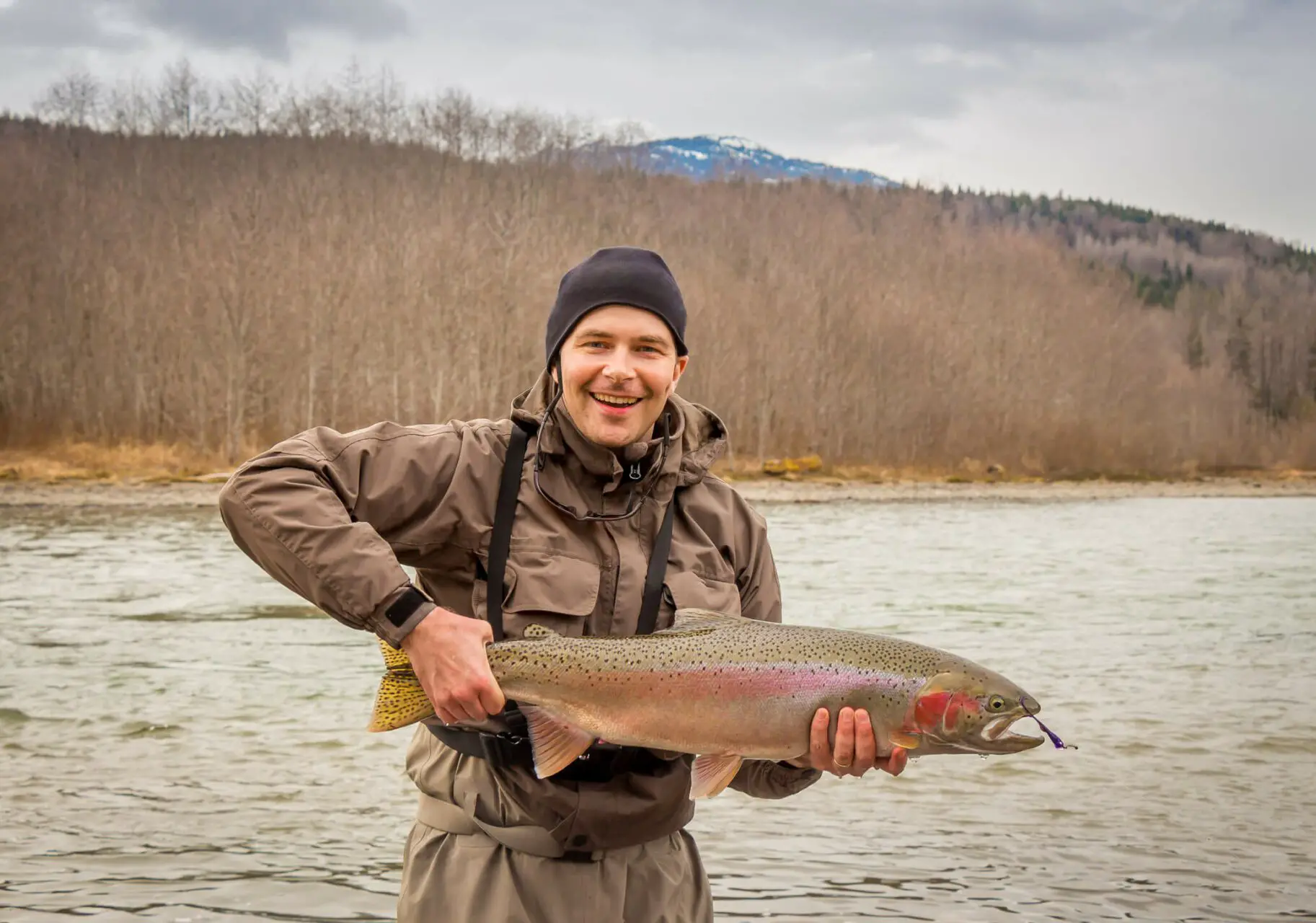

Steelhead trout, also known as anadromous rainbow trout, are a species of fish that can be found in the waters of North America. They are closely related to their cousin, the brown trout, but have some distinct differences. Steelhead live in both freshwater and saltwater environments throughout their life cycle.
In freshwater they typically inhabit rivers and streams with cooler temperatures. As adults they will migrate out to sea where they spend several years before returning back upriver to spawn. They have a silver-green body coloration with pinkish hues along the sides and back which gives them their distinctive look compared to other species of trout.
They also have black spots on their fins which can help distinguish them from other types of fish such as salmon or charr. The average size for steelhead is around 18 inches long but they can grow up to 30 inches or more! Like most other types of fish, steelhead feed primarily on insects and small crustaceans like shrimp or crayfish when living in freshwater habitats. When out at sea however, they switch over to eating mostly squid and smaller schooling fishes like herring or anchovies depending on what’s available in the area at any given time.
Fishing for steelhead requires patience since these fish don’t bite often due to their diet preferences being different from those preferred by anglers targeting other species such as bass or walleye.
Fly fishing is one popular technique used when trying your luck with steelheads because it allows you cast further distances into deeper water where these fish tend to hang out near structure like logs or rocks during certain times of year (especially during spawning season).
Other methods include trolling lures behind boats using downriggers set at various depths depending on what type bait you’re using (i e spoons spinners etc ).
Additionally jigging plastics off bottom while drift fishing has become increasingly popular amongst many anglers who target this species specifically so keep that mind if ever decide give it try yourself!
Overall steelheads are beautiful creatures that offer great challenge all levels fishermen alike making them truly unique among sportfishing world today – no matter how much experience may have just remember take deep breath relax enjoy ride ‘cause there nothing quite like catching one these magnificent beasts wild open waters!
Bull Trout
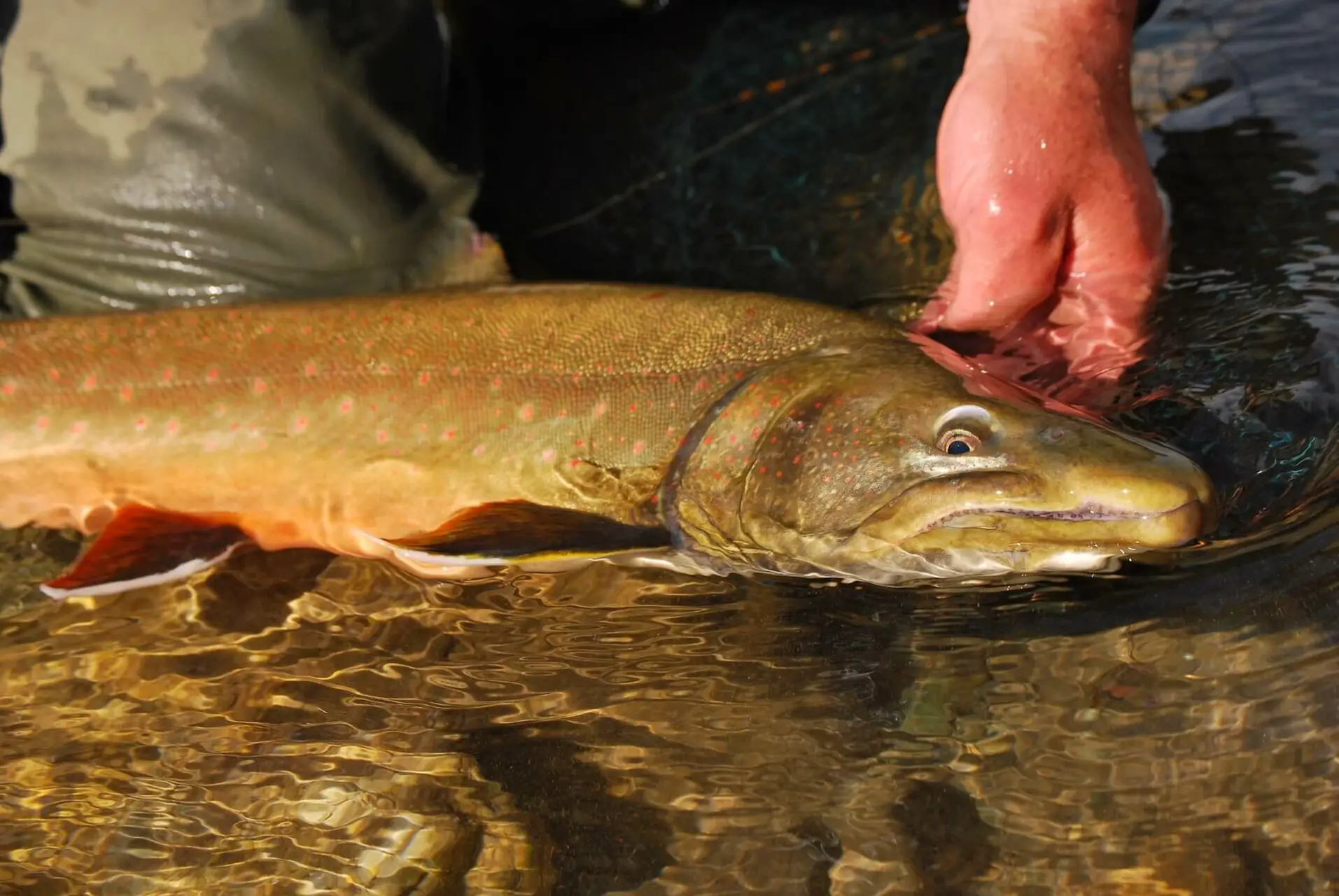

Bull Trout are a species native to the Pacific Northwest region of North America. They are related to both brown and rainbow trout, but they have their own unique characteristics that set them apart from other types of trout. Bull Trout can be identified by their large size, dark coloration, and distinctive red spots on their sides. Unlike many other species of trout, Bull Trout prefer cold water habitats such as deep lakes or fast-moving rivers with plenty of oxygen for them to thrive in. This makes them particularly vulnerable to changes in temperature caused by climate change or human activities like damming rivers and draining wetlands.
When it comes to feeding habits, Bull Trout will eat just about anything they can get their mouths around – from small insects and crustaceans to larger fish like salmonids or even smaller mammals! They also have an interesting hunting technique where they use the current created by dams or rapids to ambush unsuspecting prey swimming downstream.
In terms of fishing techniques used when targeting this particular species, anglers should focus on using lures which imitate natural food sources found in these coldwater environments – think spinners, spoons, jigs etc., rather than live bait which could potentially harm local ecosystems if not handled properly. Additionally casting upstream and allowing your lurebait drift down naturally is often more effective than trying traditional methods like trolling downstream with heavy weights attached!
Finally it’s important for anglers who target bull trout (or any type of wild gamefish) remember that catch-and-release practices should always be employed whenever possible – especially when dealing with threatened populations – so we can ensure future generations will still be able enjoy this incredible sport too!
FAQs
What are the different species of trout?
The various trout species found in North America include brown, rainbow, brook, lake and cutthroat. Brown Trout is the most widely distributed and abundant of all North American trouts. Rainbow Trout have a beautiful coloration with pink to red spots on their sides and can be found in cold streams throughout North America. Brook Trout have an olive-green body with bright orange spots along its backside and can be found in small streams across much of Canada and the United States. Lake Trout are large predatory fish that live in deep lakes around the world. Cutthroat Trout are native to western North America where they inhabit fast flowing rivers from Alaska down through Mexico’s Baja Peninsula.
What are 3 facts about trout?
1. Trout are a species of aquatic organism that inhabit many rivers and streams globally, featuring an elongated body with olive-hued dorsal area, silver flanks, and ivory underbelly. They have a streamlined body shape with an olive-green back, silvery sides, and white belly.
2. Trout feed on insects, crustaceans, small fishes, mollusks and other aquatic invertebrates which they catch using their sharp eyesight and sense of smell to locate prey items in the water column or near the bottom substrate.
3. Some trout species migrate seasonally between freshwaters such as lakes or streams for spawning purposes while others remain resident throughout their lives within one particular stream system or lake basin.
What is the rarest species of trout?
The rarest species is the Gila Trout (Oncorhynchus gilae). This trout is native to the frigid waterways of Arizona and New Mexico, reaching elevations as high as 9k ft. This fish has been listed as endangered since 1967 due to habitat destruction from dams and mining operations. Estimated to number between 5,000-10,000 individuals, the Gila Trout is an endangered species due to habitat destruction from dams and mining operations since 1967. The Gila Trout’s unique coloration makes it stand out among other trout; its sides are covered with large black spots surrounded by a yellowish halo that fades into silver on its back.
Conclusion on Trout Species
In conclusion, trout are a fascinating and rewarding group of fish to target for recreational anglers. Whether you’re looking for the challenge of catching brown trout in rivers or lake fishing for rainbow trout, there is something special about each type of trout that can make your next trip out on the water even more enjoyable. With so many varieties available, it’s easy to find a new favorite kind of fish.
Join us in our mission to help anglers of all levels improve their trout fishing skills and techniques. We provide a wide range of tackle, lures, tips, and resources for recreational fishermen so they can experience the best possible results on their next outing.
